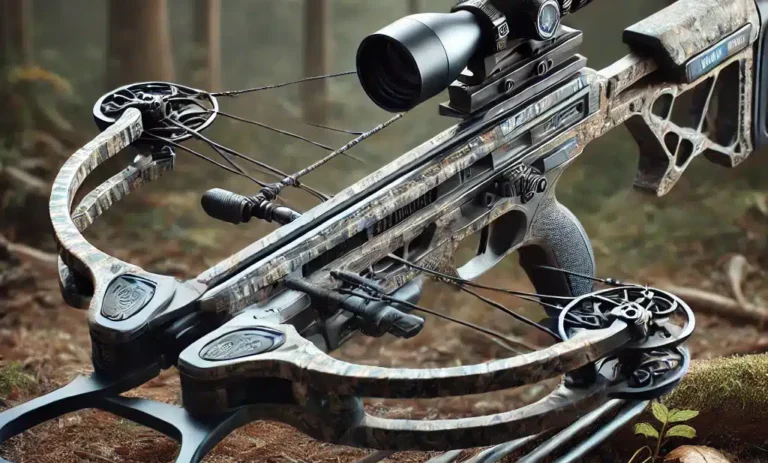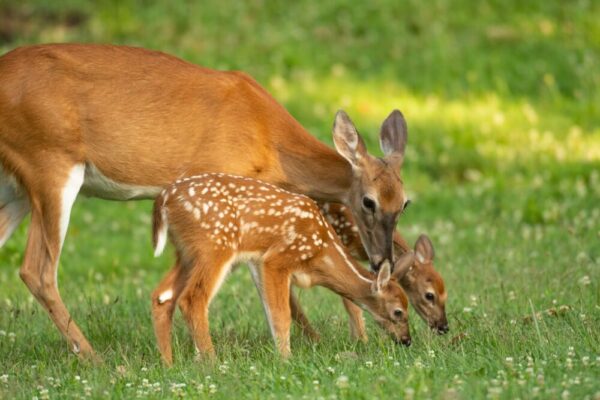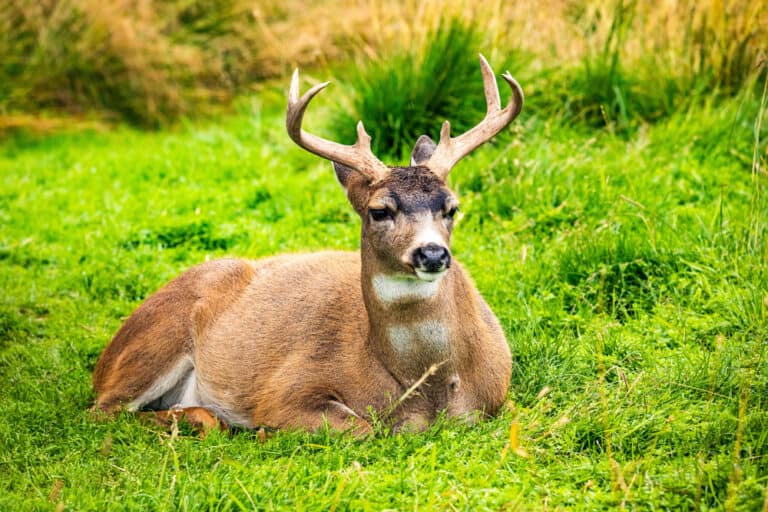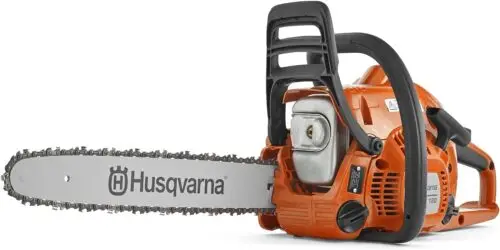Knowing where to shoot a deer is crucial for any responsible hunter. It’s not just about landing the shot but ensuring it’s practical and ethical. This blog will discuss the correct places to shoot a deer.

We’ll discuss why entry and exit points are paramount for bowhunting and strategies to avoid gut shots. For rifle hunters, we’ll examine shoulder shots vs. headshots. We also cover quartering-away versus quartering-to shots in detail. Lastly, seasoned hunters share tips on targeting between front quarters when deciding where to shoot a deer. This comprehensive guide aims to maximize kill efficiency while minimizing suffering for the animal.
The anatomy of a deer is like a treasure map for hunters. Hit the mark to succeed – that’s what it takes. The vital organs, nestled behind the shoulder and ribs, are the bullseye. Hit them, and you’ll be celebrating.
Spotting the Vital Areas
Aiming for these vital areas guarantees a knockout shot. But wait, there’s more. Depending on the deer’s position, you must know how these organs move. It’s like playing a game of hide-and-seek.
- Heart: Hiding low in the chest, just behind and slightly above the front leg. It’s a sneaky little organ.
- Lungs: Chilling above the heart, covering most of the mid-chest area. The big target with a significant margin for error.
- Liver: Hanging out behind the diaphragm, towards the back of the ribcage. It’s not as lethal as the heart or lungs, but it still packs a punch if hit right.
Adjusting Your Aim
You must adapt when the deer aren’t playing fair or perfectly broadside. If the buck is quartering away, aim a little further back. That way, your arrow or bullet will hit multiple vital organs, increasing your chances of a quick, clean kill. It’s all about outsmarting the deer. Now go out there and show those deer who’s boss.
Bowhunting Considerations When Shooting a Deer
When bow hunting, it’s about where your arrow enters the deer and where it exits. You don’t want to hit big bones that could mess up your shot or prevent deep penetration into vital organs.
Importance of Entry and Exit Points in Bowhunting
Aim for the shoulder area to hit the heart or lungs, but don’t forget to consider where your arrow will exit. Too high and you hit the spine; too low and you get a gut shot – not ideal for ethical hunting or the tasty meat.
Avoiding Gut Shots During Bow Hunting
Avoid gut shots if possible. They make the animal suffer and can ruin the meat. If you’re not sure, wait for a better shot opportunity. Here are some tips:
- Aim for broadside or slightly quartering-away positions to avoid gut shots.
- If the deer is facing you or walking away (quartering toward), be patient and wait for a safer angle.
Shooting a deer with a bow requires more than just aiming. You need to know how your weapon behaves and adjust accordingly. Practice makes perfect.
When hunting deer, rifle hunters have a distinct advantage due to the power and precision offered by firearms. The key lies in understanding shot placement and how different techniques can maximize kill efficiency.
The Effectiveness of Double Shoulder Shots with Rifles
A popular technique among gun hunters is the double-shoulder shot. This involves aiming directly at the deer’s shoulder blade area, causing massive shock damage that often leads to immediate death. The double-shoulder shot has several advantages:
- Immediate Impact: A well-placed double-shoulder shot can cause a deer to drop instantly, eliminating the need for tracking a wounded animal over potentially long distances.
- Vital Area Damage: This type of shot targets multiple vital areas simultaneously, increasing your chances of one-shot kills.
- Blood Trail: Even if the deer doesn’t drop immediately, this method usually leaves an easy-to-follow blood trail over a hundred yards or less.
Despite these benefits, every responsible hunter must aim directly and consider factors like distance from the target and rifle caliber before attempting such shots. Accuracy is key.
Risks Associated with Headshots
Sometimes, hunters may be tempted to go for headshots on moving deer because they seem like tiny targets that could result in instant kills. However, most experienced hunters advise against this practice due to several reasons:
- Poor Shot Placement Risk: Aiming at such a tiny target increases the risk of poor shot placement, leading to unnecessary suffering or even losing the game altogether.
- Damaging Valuable Meat: If you manage to land a successful headshot, there’s a significant chance that valuable meat around the neck region will get damaged, reducing the overall yield from the hunt.
Remember, responsible hunters prioritize ethical and practical shot placement. Stick to the vital areas for a clean and humane kill.
Quartering-Away Shots Versus Quartering-To Shots
The angle at which you shoot a deer can make or break your hunt. Let’s break down the difference between quartering-away shots and quartering-to shots for all you sharpshooters out there.
Advantages of Quartering-Away Shots
When a deer’s front end is facing away from you, it’s like a bullseye for your arrow or bullet. The vital organs are exposed, giving you a higher chance of a clean kill. Even if your aim isn’t the best, a shot at this angle still presents an opportunity for success. Talk about a forgiving angle.
Precautions Required For Slight Quartering-To Angles
Now, quartering-to shots are a bit trickier. You must be careful when the deer is facing you at an angle. Aiming directly at the vitals might not work well because of the deer’s body structure. Don’t make the mistake of wounding a creature, so don’t target areas that aren’t vital.
So, if you find yourself in a slight quartering-to situation, here’s what you need to do:
- Avoid the Neck Region: Don’t be tempted by the neck. Shooting there often just wounds the deer without causing a fatal blow. Aim for the good stuff instead.
- Be Patient: If you can, wait for the deer to turn broadside or slightly quartered away. Patience pays off, my friends. It’s the difference between a clean kill and a deer running off to suffer elsewhere.
- Aim Carefully: If you must take a slight quartering-to shot, aim behind the shoulder blade. Avoid those pesky bone structures that can mess up your shot. We want efficiency and people.
To sum it up, understanding the difference between quartering-away and quartering-to shots can up your hunting game. Practice proper techniques, and be patient; you’ll have a successful hunt every time.
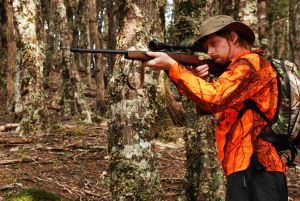
Target Area Tips from Experienced Hunters
Experienced hunters have shared their insights and strategies over the years, offering valuable advice on taking down this majestic creature.
Kip Adams, a renowned hunter and wildlife biologist, suggests following the front leg upwards when aiming.
The Importance of Targeting Between Front Quarters
Aiming between the front quarters is effective because critical blood vessels are in this area. Hitting these vessels leads to rapid blood loss, increasing your chances of a clean kill.
This technique requires precision and patience, waiting for the perfect moment when the deer presents its side profile. With dedication and experience, you can become an expert in this technique.
Here are some tips based on Kip Adams’ advice:
- Aim High: When aiming at a deer standing broadside or slightly quartered away, target just behind where you perceive its shoulder blade ends.
- Be Patient: Wait until your target turns sideways before taking your shot. This position exposes more vital areas.
- Fine-tune Your Aim: Adjustments may be necessary depending on distance and angle, so practice different scenarios at varying ranges.
If you’re interested in learning more about Kip Adams’ approach to hunting and his extensive knowledge of deer biology, check out his articles online for additional insights into successful hunting strategies.
Where should you aim when hunting deer?
Avoid shooting the deer in non-vital areas like the head, legs, and stomach – that’s just mean. Instead, aim for a quick and humane kill for the heart or lungs.
Where can you find the most deer?
If you’re looking to bag a bunch of deer, head to areas with high deer populations, like the Midwest or the South. Ensure you have the proper permits and follow all hunting regulations – we don’t want illegal hunting practices here.
Where do hunters usually aim at a deer?
Hunters typically aim for vital regions like the heart or lungs, located behind and slightly above where the front leg attaches to the body. For a detailed anatomy lesson, check out our deer anatomy guide.
What’s the secret to the best shot placement?
The best shot placement depends on your weapon, but aiming for the vitals – especially the heart or lung region – ensures a quick and humane kill. For more specifics, refer to our best shot placement guide.
FAQs
How to field dress a deer?
Field dressing a deer is a critical step after a successful hunt, as it helps preserve the quality of the meat and makes transportation easier. Here’s a step-by-step guide on how to field dress a deer:
Note: Field dressing requires sharp tools and proper techniques. If you’re new to field dressing, consider seeking guidance from experienced hunters or attending workshops to learn the process thoroughly.
Materials Needed:
- Sharp hunting knife
- Latex or disposable gloves
- Plastic bags (for organ removal)
- Rope or hoist (for hanging the deer)
Instructions:
Safety First:
- Ensure your safety and that of those around you. Use caution when handling sharp knives and follow proper firearm safety protocols.
Secure the Deer:
- Locate the deer and confirm it’s down and no longer a threat. If the deer isn’t already down, ensure it’s properly dispatched.
Prepare the Area:
- Clear the area around the deer and create a clean, flat workspace. Lay out your tools and gloves.
Position the Deer:
- Position the deer on its back with its legs spread apart. If possible, prop up its hindquarters using a log or other support. This helps facilitate the field dressing process.
Put on Gloves:
- Put on latex or disposable gloves to minimize contact with bodily fluids.
Make the Initial Incision:
- Start by making a vertical incision from the base of the ribcage to the pelvis. Be cautious not to puncture the stomach, intestines, or bladder.
Remove the Organs:
- Carefully cut through the abdominal muscles, exposing the organs. Pull the organs away from the body cavity, using your knife to cut the connective tissues as needed.
Carefully Remove the Diaphragm:
- Cut the diaphragm (a thin muscle separating the chest and abdominal cavities) to free the organs from the body cavity fully.
Tie Off the Anus:
- If you haven’t done so, tie off the anus to prevent contamination. A zip tie or a piece of twine can be used.
Inspect and Rinse:
- Inspect the internal organs for any abnormalities. Rinse the cavity with clean water if available.
Complete the Process:
- Close the body cavity by pulling the skin together and securing it with the legs’ tendons or using a cord or zip tie.
Transport:
- Once the deer is field-dressed, it’s ready for transportation. Keep the deer cool to prevent spoilage.
Remember that field dressing is a skill that requires practice. Properly field dressing a deer helps maintain the quality of the meat and contributes to ethical hunting practices. If you’re new to the process, consider seeking guidance from experienced hunters or attending workshops to learn the technique thoroughly.
How long do deer live?
In the wild, deer typically have an average lifespan of 4 to 6 years. However, some deer can live longer, especially if not subjected to predation, hunting, or environmental challenges.
What do you call a deer with no eyes?
A deer with no eyes would be called a “no-eye deer,” which sounds like “no idea.” It’s a play on words and a humorous wordplay.
How to score a deer?
Scoring a deer involves assessing its antlers based on specific measurements to determine its “score” or quality. Hunters often do this to determine the size and quality of the deer’s antlers. The most common scoring system is the Boone and Crockett or Pope and Young scoring systems for North American big game animals. Here’s a simplified guide on how to score a deer’s antlers:
Note: Scoring deer antlers requires familiarity with the scoring system and measuring techniques. Learning from experienced individuals or studying detailed guides is advisable to ensure accuracy.
Materials Needed:
- Scoring sheet or chart (Boone and Crockett or Pope and Young)
- Measuring tape
- Flexible steel cable or wire
- Calipers (for specific measurements)
Instructions:
Learn the Scoring System:
- Familiarize yourself with the specific scoring system you intend to use (Boone and Crockett or Pope and Young). Each system has its criteria and measurements.
Measure Main Beam Length:
- Measure the length of the main beam of one antler from the base to the tip along the outer curve.
Measure Tine Lengths:
- Measure the lengths of each tine (point) on the antler. Tines are typically measured along the outer edge, starting from the base where they emerge from the main beam.
Measure Inside Spread:
- Measure the inside spread, the distance between the main beams at the widest point.
Measure Circumference:
- Use a flexible steel cable or wire to measure the circumferences of each main beam each time at the smallest location between points.
Calculate the Score:
- Use the specific scoring system’s formula to calculate the score based on your measurements. The formulas consider the lengths of the main beam and tines, inside spread, and circumferences.
Record the Score:
- Record the individual measurements and the calculated score on the scoring sheet or chart.
Learn About Deductions:
- Depending on the scoring system, deductions may be made for certain imperfections or non-typical features. Familiarize yourself with the deduction criteria.
Seek Verification (Optional):
- If scoring for record-keeping purposes, consider having an official scorer verify your measurements. Official scorers are certified by organizations like Boone and Crockett or Pope and Young.
It’s important to emphasize that scoring antlers is often done for recreational purposes and does not reflect a deer’s overall health or value. Ethical hunting practices should always prioritize conservation and respect for wildlife. If you’re interested in scoring deer antlers, take the time to learn the scoring system thoroughly and practice accurate measuring techniques.
What eats deer?
Predators that eat deer include wolves, mountain lions (cougars), bears, coyotes, and sometimes alligators in certain regions.
Where to shoot a deer?
See article above
Conclusion
Hunters understand deer anatomy and adjust their point of impact based on the deer’s position in the environment. Whether bow hunting or rifle hunting, you must consider entry and exit points to maximize kill efficiency while avoiding gut shots. Quartering-away shots offer advantages, but be cautious with slight quartering-to angles. Experienced hunters recommend targeting the front quarters as a critical area to aim for when determining where to shoot a deer.

